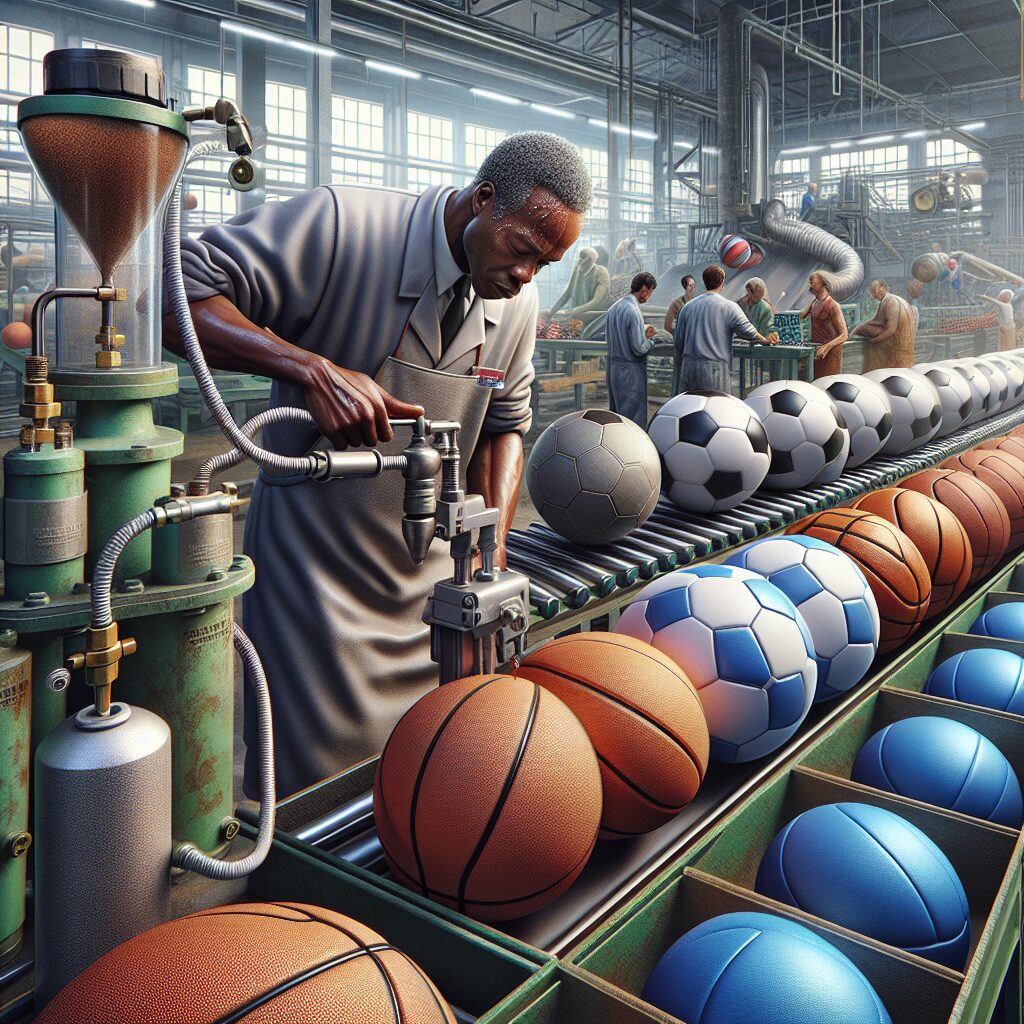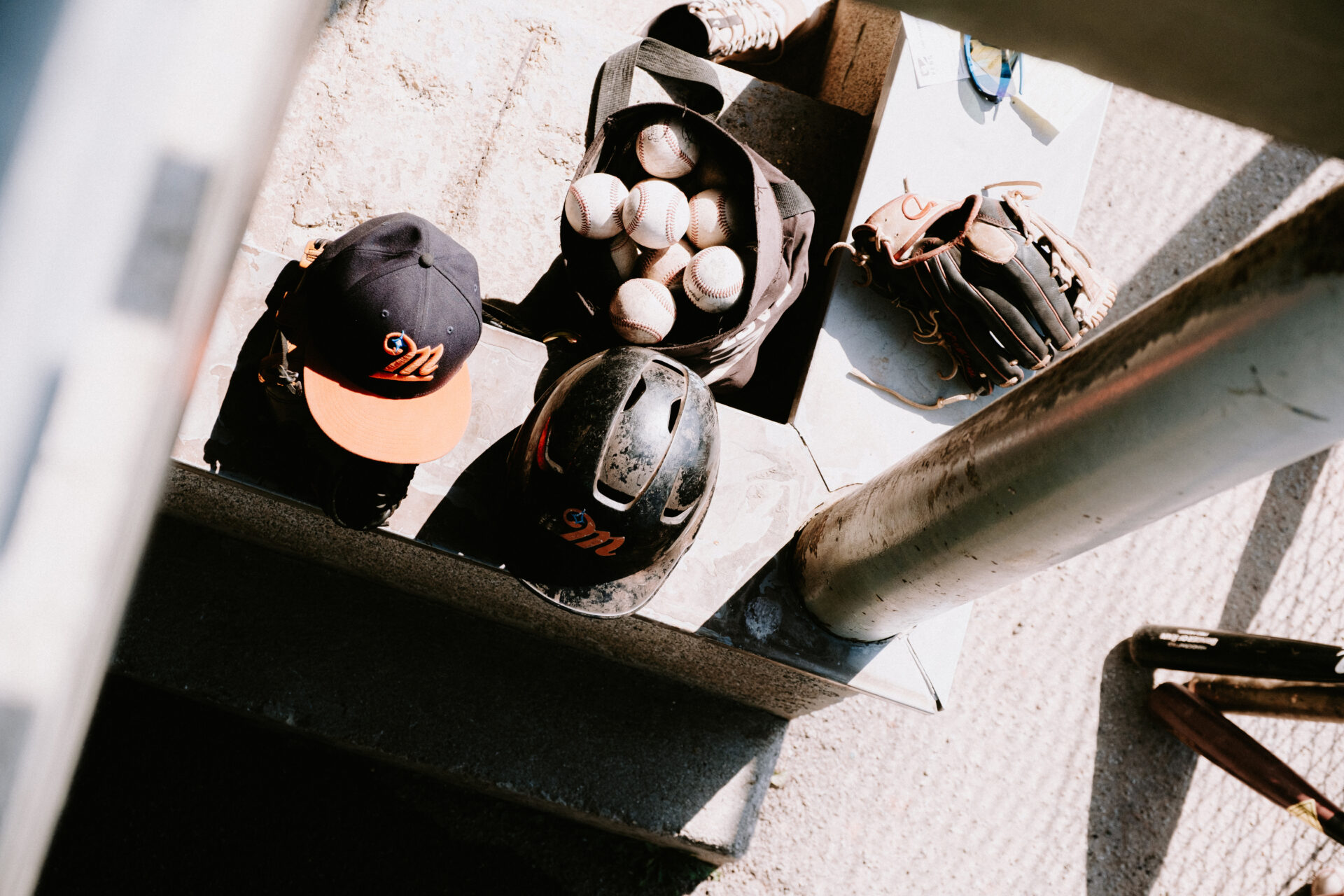Inflating sports balls may seem like a simple and mundane task, but it is actually the final touch in the production process that plays a crucial role in ensuring optimal performance on the field. When we talk about inflating sports balls, we are referring to the process of filling them with air or other gases to achieve the desired pressure and bounce. This seemingly simple step can have a significant impact on the overall performance and durability of the ball.
The inflation process of sports balls has a direct influence on their bounce, stability, and overall playability. The amount of air or gas pumped into the ball determines its firmness and responsiveness, affecting how it bounces off the ground or other surfaces. An inadequately inflated ball may result in unpredictable bounces or reduced control during gameplay. On the other hand, over-inflating a ball can lead to excessive rebound, making it harder to control or handle. Finding the perfect balance in inflation is essential to ensure fair play and maintain consistency in sports such as soccer, basketball, volleyball, and many others.
Now that we understand the importance of inflating sports balls correctly, let’s delve deeper into the key takeaways. In the following sections, we will explore the various factors that affect the inflation process, the ideal pressure ranges for different types of sports balls, and the tools and techniques used for inflation. By the end of this article, you will have a comprehensive understanding of the final touch in ball production and its significance in delivering an optimal playing experience. So, let’s dive in and explore the world of inflating sports balls!
Key Takeaways
1. Inflating sports balls to the correct pressure is a crucial final step in the production process, as it not only impacts the performance of the ball but also ensures player and game safety.
2. Manufacturers utilize different methods, such as hand-pumping or automated machines, to achieve the desired pressure level in sports balls, depending on the specific requirements of each type of ball.
3. It is essential to carefully monitor and control the pressure levels during production to prevent overinflation or underinflation, which can result in weakened materials, reduced performance, and potential injury risks.
4. Quality control procedures, including pressure testing and visual inspections, are implemented to maintain consistency and quality across the production of sports balls, ensuring that each ball meets the industry standards and customer expectations.
5. Sports governing bodies, such as FIFA and NBA, have specific regulations and guidelines in place regarding ball pressure, ensuring fair play, consistent performance, and player satisfaction across different sports and competitions.
How to Achieve the Perfect Inflation for Sports Balls?
Importance of Proper Inflation in Sports Balls
Proper inflation is a crucial aspect of manufacturing sports balls. It directly affects the performance, bounce, and durability of the ball. Inflating sports balls to the recommended pressure ensures optimal playability and reduces the chances of accidents or injuries during games. Therefore, it is essential to understand the final touch in production – the inflation process.
Choosing the Right Air Pressure
Determining the correct air pressure for each type of sports ball is vital for achieving optimal performance. The recommended pressure can vary depending on the ball’s size, material, and purpose. For example, a basketball typically requires an inflation pressure between 7.5 and 8.5 pounds per square inch (PSI). Soccer balls, on the other hand, generally need to be inflated to a pressure of 8.5 to 15.6 PSI. It is crucial to consult the manufacturer’s guidelines to ensure the accurate air pressure for different sports balls.
Inflation Techniques and Equipment
There are several techniques and equipment available to ensure the proper inflation of sports balls. Here are some common methods used in production:
1. Manual Hand Pump
Using a manual hand pump is a traditional method for inflating sports balls. It provides precise control over the amount of air being pumped, ensuring gradual inflation and preventing over-inflation. This method is suitable for smaller-scale production or individual use.
2. Electric Air Compressor
For larger-scale production or facilities with high demand, electric air compressors are often used. These machines provide efficient and consistent inflation, capable of handling multiple balls simultaneously. It is important to adjust the pressure settings according to the recommended guidelines for each specific ball.
3. Pressure Gauges and Needles
To accurately measure and control the air pressure during inflation, pressure gauges and needles are essential tools. Pressure gauges help monitor the PSI level, enabling adjustments to achieve the recommended pressure. Meanwhile, needles are used to insert air into the ball through the valve stem.
Testing and Quality Control
After inflation, it is vital to perform thorough testing and quality control to ensure the sports balls meet the necessary standards. This includes checking the bounce, circumference, weight, and overall feel of the ball. Any defects or deviations from the desired specifications should be identified and addressed promptly.
Proper Storage and Maintenance
Once the sports balls are properly inflated and have passed quality control, it is crucial to store and maintain them correctly. Proper storage helps preserve the quality and performance of the balls, extending their lifespan. It is recommended to store inflated sports balls in a dry and cool environment, away from direct sunlight or extreme temperatures.
Conclusion
Achieving the perfect inflation for sports balls is a critical final touch in the production process. It directly impacts the performance, durability, and safety of the ball. By following the recommended guidelines, utilizing appropriate equipment, and conducting thorough testing, manufacturers can ensure the optimal inflation of sports balls, enhancing the overall playing experience for athletes.
1. What are the recommended inflation pressures for basketball, soccer balls, and other sports balls?
2. What are the different techniques and equipment used for inflating sports balls?
3. How can pressure gauges and needles help in achieving accurate inflation?
4. What testing and quality control processes should be conducted after inflation?
5. How can proper storage and maintenance prolong the lifespan of sports balls?
Frequently Asked Questions
1. How is the inflation process different for different types of sports balls?
The inflation process can vary depending on the type of sports ball. For example, soccer balls typically require a higher PSI (pounds per square inch) compared to basketballs or volleyballs. Each type of ball may also have specific inflation guidelines provided by the manufacturer.
2. Can I use any type of pump to inflate sports balls?
It is recommended to use a pump specifically designed for sports balls to ensure proper inflation. These pumps often have a gauge that allows you to monitor the pressure as you inflate the ball, preventing over-inflation.
3. What is the ideal pressure for inflating sports balls?
The ideal pressure for inflating sports balls can vary depending on the specific ball and the sport. Generally, soccer balls are inflated to a pressure of around 8-12 PSI, basketballs to 7-9 PSI, and volleyballs to 4-6 PSI. It’s important to refer to the manufacturer’s guidelines for the recommended pressure.
4. How can I determine if a sports ball is properly inflated?
A properly inflated sports ball should feel firm and have a consistent bounce. You can also use a pressure gauge to check if the ball meets the recommended pressure range specified by the manufacturer.
5. Can over-inflation damage the sports ball?
Yes, over-inflating a sports ball can cause damage. Excessive pressure can lead to the seams bursting or the outer surface cracking. It’s important to monitor the inflation process and avoid surpassing the recommended pressure.
6. Should I deflate a sports ball after each use?
It’s not necessary to deflate a sports ball after each use, but it is recommended to release some air if the ball will not be used for an extended period. This helps to prevent excessive pressure build-up, which can compromise the ball’s integrity.
7. Can I inflate a sports ball using my mouth?
While it is possible to inflate a sports ball using your mouth, it is not recommended. This method can introduce moisture and bacteria into the ball, affecting its longevity and performance. It’s best to use a suitable pump to ensure hygienic inflation.
8. How often should I check the inflation of my sports balls?
It’s a good practice to check the inflation of your sports balls before each use. Temperature fluctuations, prolonged use, or transportation can affect the pressure inside the ball. By checking the inflation regularly, you can ensure optimal performance and safety.
9. Can I use a different type of needle to inflate sports balls?
Using a different type of needle may not result in a secure fit, potentially causing air leakage during inflation. It’s recommended to use the needle that is specifically designed for the sports ball you are inflating to ensure a proper seal and accurate pressure.
10. Are there any safety precautions to keep in mind while inflating sports balls?
When inflating sports balls, it’s important to avoid overexertion or forceful pumping, as it may damage the ball or cause injury. Make sure to follow the manufacturer’s instructions, use appropriate safety equipment, and keep your fingers away from the inflation needle during the process.
Final Thoughts
Ensuring the proper inflation of sports balls is crucial for optimal performance and longevity. By following the recommended guidelines provided by the manufacturer, you can enhance your overall playing experience and extend the lifespan of the ball. Remember to check the pressure regularly, use the appropriate pump, and avoid over-inflation or under-inflation. Taking these simple steps will help you make the most of your sports balls and enjoy them to the fullest.
Inflating sports balls is not just a routine step in the production process; it is the final touch that brings the ball to life. The right amount of pressure and firmness determine how the ball moves, bounces, and performs on the field or court. Whether you’re a professional athlete or a casual player, understanding the importance of proper inflation can significantly impact your game. So, don’t overlook this crucial aspect and give your sports balls the attention they deserve – inflate them right and experience the difference it makes in your playing experience.




